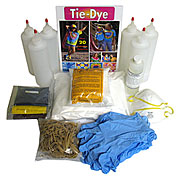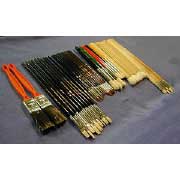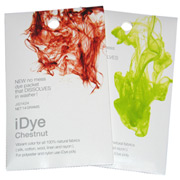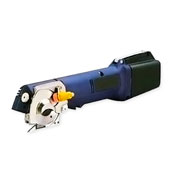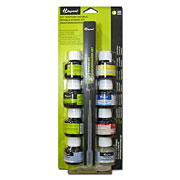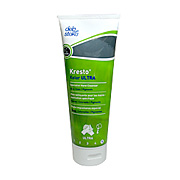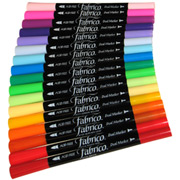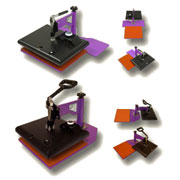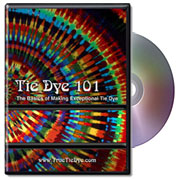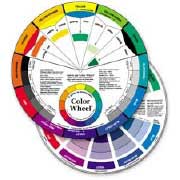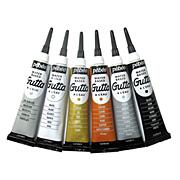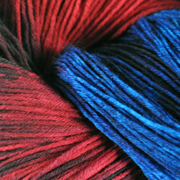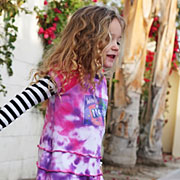|
||||||||||||||||||||
|
|
|
|
|
|
|
Click on an icon to the left for a full description... |
|
|
|
|
|
|
|
|
|
|
|
|
|
|
|
|
|
|
|
|
|
|
|
|
|
|
|
|
|
|
|
|
|
|
|
|
|
|
|
|
|
|

|
1x1 Rib Knit
Made with 1x1 cotton rib knit.
Rib knits are knit with a rib stitch which forms wales of knit that are alternating from one side of the fabric to the other. This makes for a very stretchy, comfortable knit that hugs close to the body. This capacity makes for clothing that can fit a wide range of shapes. 1x1 is another name for Rib Knit in which the knit wales alternate evenly - 1 on one side and 1 on the other.
2x1 Rib Knit
Made with 2x1 cotton rib knit.
Rib knits are knit with a rib stitch which forms wales of knit that are alternating from one side of the fabric to the other. This makes for a very stretchy, comfortable knit that hugs close to the body. This capacity makes for clothing that can fit a wide range of shapes. 2x1 is another name for a variation of Rib Knit in which the wales are knit 2 on one side and 1 on the other.
Baby Rib Knit
Made with baby cotton rib knit.
Rib knits are knit with a rib stitch which forms wales of knit that are alternating from one side of the fabric to the other. This makes for a very stretchy, comfortable knit that hugs close to the body. This capacity makes for clothing that can fit a wide range of shapes. Baby Rib is a very fine rib knit usually made with single spun, combed cotton fibers. The thinner threads make for a smoother surface for heat transferring, painting, and stamping than our regular Rib Knit, while maintaining the same 100% stretch.
Cotton Lycra
Made with cotton and a small percentage of Lycra fabric.
A Jersey Knit fabric that is usually 90% Cotton and 10% Lycra spandex so it is very stretchy and form fitting, but still dyes very well with Fiber Reactive dyes.
Fleece
A knit that is smooth on one side with a deep fuzzy sheered pile on the underside - very warm and soft next to the skin; used commonly for sweats.
French Terry
A knitted fabric that is smooth on one side and has an uncut loop pile on the underside. Not quite as heavy as Fleece.
Interlock
A variation of the rib stitch, which resembles two separate 1 x 1 ribbed fabrics that are interknitted. Interlock fabrics (also called double knits) are thicker, heavier, and more stable than single knit constructions, also extremely
soft!
Jersey
Made with knitted cotton jersey.
A knit fabric with lengthwise chain stitch on the right side and crosswise half-loops on the back side. The surface is flat and excellent for printing. Somewhat stretchy with good draping qualities. Has special crease-resistant qualities due to its construction. Also known as Tee Shirt Material.
Rayon Jersey
Made with knitted rayon jersey.
A Jersey Knit made with Rayon yarn. Much softer, finer and drapier than cotton jersey. Very luxurious! As with all Rayons, handle carefully when wet!
Ringspun Combed Jersey
A Jersey Knit that is made from fibers that have been combed instead of carded, which captures more of the longer desirable fibers instead of lots of short peices. It is then ringspun, which means because of the amount of these longer thinner fibers they can be tightly twisted together to make a stronger, smoother and finer thread. Therefore the knit is softer and finer feeling, and also presents a superior surface for printing.
Sandwashed Charmeuse
Charmeuse (crepe backed silk satin) is normally very shiny on one surface and is a very luxurious fabric. Sandwashing is a process in which the fabric is washed with very fine lava rocks or rubber/silicone balls that abrades the surface and gives the fabric a very soft relaxed look and also reduces shrinkage. It makes the natural silk sheen much more subtle and elusive. You will never want to wear anything else!
Silk Knit
A Jersey Knit made of 100% silk - the fineness of the silk yarn used makes this fabric light and form fitting, so comfortable it is like a second skin! Insulates, yet breathes; smooth, soft and slinky!
Stretch Velvet
Dharma's Stretch Velvet is Rayon/Silk velvet (see definition of Velvet) that has a little bit of synthetic stretchy Spandex in the silk backing (9%) - enough to enable it to stretch but not enough to adversely affect how the backing takes dye. It gives the velvet properties that make it suitable for a much larger variety of garments, including ones that are more fitted and sexy!
Thermal Weave
Also known as waffle weave. Ours is woven cotton fabric that is textured forming small squarish three dimensional cells that trap air and give the fabric its warmth retaining qualities. Very warm, but lighter than fleece, so very comfortable, used for both under and outerwear.
Velour
Made with knitted cotton fabric.
A knit with a soft, dense, closely cropped pile on the right side. Ours is mostly cotton with a small amount of spandex added for comfort and fit, but still dyes beautifully with Fiber Reactive dyes. Fuzzy, warm and huggable!
Velvet
A luxurious fabric with a short, soft, thick uniformly cut pile surface of looped extra warp yarns that stand up straight; the back of the fabric is just plain. Velvet can be any fabric or combination of fabrics, with pure silk the most expensive and cotton being very heavy. Dharma carries Rayon/Silk velvet which has a rayon pile and silk backing. It is lighter than cotton and much more affordable than pure silk, has a wonderful shimmer and absorbs dye like nobody's business. It can be interesting to dye because it is both cellulose and protein.
Velveteen
Made from 100% cotton, it is woven exactly like velvet, with the cut pile surface, but to make it not too heavy, the pile is shorter. The pile is very dense which makes it a strong fabric that takes hard wear.
Woven Cotton
Cotton that is produced on a loom with the yarns intersecting each other at right angles. Fabric is smoother than a knit but has no elasticity.
Woven Rayon
Rayon that is produced on a loom with the yarns intersecting each other at right angles. Fabric is smoother than a knit but has no elasticity. Woven Rayon has a superior drape to cotton and a softer feel. Dyes intensely with Fiber Reactive dyes. Rayon is weak when wet, so you have to treat it more carefully when dyeing, but it's worth it! Always support all of the fabric when wet, never pick it up by the edges or a very small area. The lighter the weight of the rayon, the more delicate when wet.
Woven Silk
Silk that is produced on a loom with the yarns intersecting each other at right angles. Fabric is smoother than a knit but has no elasticity. The natural sheen of the silk varies depending on the weave, with the Satin weave being the thiniest, Habotai somewhere in between, and Crepe having less sheen and more texture. Charmeuse is a Satin weave on the top surface with a Crepe weave on the underside and is considered to be the Creme de la Creme of the silk fabrics!
Cotton Thread
Sewn with cotton thread for complete dyeing.
Some of our clothing is sewn with cotton thread and some with synthetic thread. The advantage of cotton thread is that when you dye a cotton garment sewn with cotton thread into a solid color, the thread dyes just like the fabric and doesn't look "saddle stitched". On the other hand, since cotton dyes will not dye synthetic thread, synthetic thread remains white and if the stitching is visible, it can look odd. The reason why most clothing is sewn with synthetic thread is that cotton thread is not as strong as synthetic thread and may not hold up as well through repeated washings. It's also harder for production sewers to use as it tends to break more often and slows down production. Unless you are dyeing solid colors, it's questionable whether the thread matters. In tie-dye or painting it really seems to make little difference. We have lots of our clothing sewn with cotton thread. Look for the cotton thread symbol if this is important to you. Usually it also says in the item's description.
Learn About Our Rayon
We're using a high quality Rayon fabric from Bali. It comes from a woody bush that is farmed and grows quickly without pesticides and fertilizers, hence in that way is a very earth friendly, renewable resource. No rain forests or other forests are being cut down to produce the rayon as folks sometimes think. In Bali they pre-soak and line dry the fabric before cutting the garments, which does some pre-shrinking, & sew it with cotton thread for all of our clothing. We've designed the sizing to fit American women - not Junior sizing masquerading as adult and we are making a range of sizes, not "one size fits none" stuff.
IMPORTANT: Rayon is more delicate than cotton, especially when wet. We recommend hand washing and line drying rayon items. Also, rayon is much weaker when wet than when dry. It is important to support the whole garment if you are going to lift it out of a dyebath or hanging it wet. additionally, all the items are sized to fit after shrinkage, so they are a bit large to start and may seem long in the photos. The measurements given are before shrinkage. Shrinkage of a long dress in the length is about 5 inches, and maybe an inch or two around the bust.
Hand Wash and Dry
We recommend hand washing and line drying this item.
Some items, especially our Rayon garments, are not as sturdy as others or fray more easily (like looser weaves of cotton canvas or gauze) and will not stand up to the same level of abuse that we put cotton T-shirts and jeans through. If you put a rayon dress through a washer/dryer in a load with say, jeans, then in the tumbling, the jeans will rub and pull on the dress's seams. If the dress has ties or straps, they will get tangled in the jeans and other items and pull and tear the seams. Also Rayon fabric itself is weak when wet, then regains its strength when dry. If you machine wash rayon items alone or better yet in a net bag, then the rayon item will hold up just fine. Never pick wet rayon garments up by a small edge either, as it can tear. Best of all is hand washing and line drying, which avoids the issue entirely, and is what we recommend.
Fair Trade Plus
Generally speaking, "fair trade" goods are those which the source (guy who grows the coffee, the woman who sews the garment) gets the bulk of the wholesale price - there is no "middle man" taking a profit. The retailer, usually takes a full profit or in some cases, more than usual. We go one step further in that we front the money to buy the cloth, allow the co-ops to set the price for each garment, import it and then sell it with little or no profit to give them a price advantage so they can make more sales. That's what our "+" means.
Made in the USA
This garment or product was sewn and/or assembled in the United States of America. Some parts or the fabric for the final product might have come from other countries, i.e.; the fabric might have been woven in Mexico or China or South America, etc...and we say might have. Sometimes we don't know where the fabric comes from. But we do know where the workshops are and where the nimble fingers sew up our garment blanks. Some of the fabrics are loomed and milled in the USA. Anyway, the final design, construction, and assembly is in/from the good old USA. So it's made by American workers and shipped by American workers - maybe somewhere near your hometown!
Bolivian Cooperative
The owners of Dharma (35 years and counting) have a variety of interests, One of which is "Social Entrepreneurship". For us that means "helping people help themselves". Having lived in the third world, what seems to work best there is to provide a way for people to earn a living and enabling them to solve their own problems. One of our projects is a sewing cooperative in Bolivia involving about 14 families. We have this coop make clothing to our designs and standards. Dharma provides the money for them to buy the materials, then buys the clothing at the prices they set and imports and sells the items. To insure that their clothing sells really well, we sell it near our cost to get it here. Dharma makes between nothing and less than usual on these items. That's why they are less expensive than similar items in our catalog. We can afford to not make much profit on these items - no big deal! That's the story - there are other groups we work with, like the weavers in Central Java that make our cotton scarves, the women in Bali who crochet our hats and halters and so on. Each situation is different and how we handle it is different. The point is, it's a bargain for you, it provides work for the coop members and we at Dharma feel good about doing it.
Warmis Cooperative
Warmis is a little cooperative of Qechua Native American women on the outskirts of Cochabamba, Bolivia. The women crochet and try to sell what they make, but it's been rough going for them. Dharma has worked with them to redesign the girl's dresses we're offering so they work correctly for the US customer. Dharma advances them the money to buy the materials and pays to them whatever they think is right for the dresses. We sell them with little or no profit just to provide them with work and some income. These are dresses, when dyed, which maybe sell for $35 in a children's boutique store. You can see what a bargain they are to you here and at the same time you're helping someone who's trying to climb out of poverty.
Tata Esteban Cooperative
Tata esteban is another bolivian sewing co-op for which we provide a market. This co-op consists of young indigenous girls who have graduated from a school developed and directed by Catholic nuns. The school provides vocational training for the girls in sewing, and Dharma provides design assistance and a market. The existence of this co-op allows the girls to remain in their village with their families instead of having to go to the cities in search of work. The boys are trained in construction trades - concrete, electrical and carpentry. It's a wonderful project and Dharma is happy to sell the items they sew for you at little to no profit to make them priced attractively.
Sized for INFANTS
Newborn babies - 24 month old infants
Everybody's baby comes in a different size. Someone's newborn might be someone else's 3 month old. This is the range of garments designed for babies who are still in diapers or those puffy training pants! More room in the seat area - if ya know what we mean. Neck openings are larger to accommodate dressing baby.
Sized for CHILDREN or YOUTH
Children aged 2 yrs - 12 yrs.
So your child is finally potty trained! Celebrate with toddler clothes! This is the garment range for those golden years of 2-4 yrs. (hang in there, you'll get through it) and kindergarten aged children 5-6 yrs. This is a great age because you get to dress your kids in whatever you want. They don't have a clue yet until they turn 8 - then they start telling you what they want to wear.
Sized for JUNIORS
Teenagers aged 13-18 yrs. / adults should buy a size larger.
Junior sizes run a size smaller than "Misses" or "Ladies" garments. Junior garments are closer fitting, are cut shorter from neck to waist and are designed to fall at or above the waist for tops and at or below the waist for bottoms. Adults buying Junior sizes should buy one size larger than usual.
Sized for ADULTS
Adults aged 18 yrs. to 100! / fit will be oversized for teenagers
Sized for the fully grown adult - male or female. Usually has a looser fit for ease of comfortable wearing. Adult clothing for women is designed for the average heights of 5'4"-5'8" tall. Men's adult sizes are designed for average height ranges of 5'9" - 6' tall. Remember, that even though you are wearing "adult" clothing, you're allowed to still act like a kid if you want to. If you're wearing tie-dye, this is a given reality. Don't worry - be happy!
Cut Oversize for Shrinkage
Will shrink to fit normally.
Cotton shrinks! This fact is reported to have been discovered by the ancient Egyptians and has been confirmed by countless distraught women through the ages. You can figure about 3-5% in width and 8-12% in length depending on the type, weight and knit. Sharp changes in temperature cause more shrinkage than gradual changes. Preshrunk goods shrink less, but still shrink. "Compacted Cotton" has been scrunched up between rollers so that there is built in extra length in the fibers so it shrinks less.
Allow for the shrinkage!
In some garments, this means buying a size larger. If the item is cut oversize to allow for shrinkage it will be big at first and then shrink down to the size on the label. In the end, we have to leave it you to judge the right size to buy. See our Sizing Page for more detailed info on clothing sizes.
Prepared for Dyeing
No whiteners, is sewn with cotton thread, cut oversize.
Generally speaking, a PFD item
a. Has had no optic whiteners added and is off-white in color,
b. Is sewn with cotton thread (so the stitching dyes the same color), and
c. Is usually cut oversize because it is understood that the garment is going to be dyed and will shrink.
Note: Always prewash when solid color dyeing.
a. Has had no optic whiteners added and is off-white in color,
b. Is sewn with cotton thread (so the stitching dyes the same color), and
c. Is usually cut oversize because it is understood that the garment is going to be dyed and will shrink.
Note: Always prewash when solid color dyeing.
Ready to Dye
No starches, sizing or finishes applied to the fabric.
This usually means:
a. There were no starches, sizing or finishes applied to the fabric which could interfere with the dyeing.
b. The item may or may not be sewn with cotton thread
c. The item may or may not be cut oversize to allow for shrinkage.
Note: Always prewash when solid color dyeing.
a. There were no starches, sizing or finishes applied to the fabric which could interfere with the dyeing.
b. The item may or may not be sewn with cotton thread
c. The item may or may not be cut oversize to allow for shrinkage.
Note: Always prewash when solid color dyeing.
Pre-washing (also known as scouring)
To pre-wash or not to pre-wash, that is the question. We get calls from experienced dyers as well as "newbies" asking why their dye job came out uneven. One of the most common causes is skipping the pre-wash. In our directions, we recommend pre-washing garments with HOT water and a detergent like Synthrapol. Some dyers use soda ash in the prewash. This is called "scouring". This process prepares the fibers to receive the dye by cleaning them thoroughly. Even PFD (prepared for dyeing) garments can come out blotchy from not pre-washing. That is because fabrics and garments go through a lot of machines and hands (including yours!) before they get dyed. Any oily substance (seen or unseen) can inhibit dye from absorbing. Fabrics and clothing not specifically sold for the purpose of dyeing can have other substances on them which inhibit the dye. Pre-washing as recommended above will remove just about everything except starches and permanent press finishes. An enzyme detergent will remove starch. Permanent press garments are best not dyed unless you want to mess around with Muriatic acid (available at pool supply stores).
Dharma sells fabrics and garments which are intended for dyeing, and we specifically ask our vendors that they not be treated with any "finishes", so hot water and Synthrapol detergent should do the trick. For the reasons mentioned above, pre-washing is most important for tub dyeing when you want to get an even solid color. Folks doing tie dye, batik, crystal wash, low immersion or other "un-even" techniques often choose not to pre-wash for reasons of time and economy. If you get satisfactory results, great! But for solid color tub dyeing we don't recommend skipping this vital step. If you don't have time, you will sometimes get lucky, sometimes not. You have to decide if you can accept the results if they come out uneven.
About Our Product Labels
Now, to conform to federal and state laws our labels make everything sound like a deadly poison, even simple things like sawdust and seaweed. The law says you have to warn everyone about everything, regardless of how obvious, stupid or remote the possibility. So our labels now have warnings equal to "Do not to pack your ears full of Soda Ash while walking on railroad tracks as it will interfere with your hearing and you might get hit by a train". Or maybe, "Do not drink this disgusting yellow liquid chemical". I mean, are there people out there that are going to do these things and if so, can they read? Anyway, we are now labeled to the "max". Please don't hold it against us. You may find the same product from another supplier without any warning label at all. Same product, different label.
About Dimensional Weight
UPS and Federal Express, and now the United States Post Office, charge additional fees for large but lightweight packages. The professional term for this is "Dimensional Weight". It has to do with how much space a box takes up on their trucks and planes. Some of our products are very light, such as squeeze bottles, storage jars, jugs, and wooden embroidery hoops. Others are bulky, like sweat shirts. When a lot of these go into a box without anything heavy, the weight of the box often does not represent the amount of space on a plane or a truck the box takes up. When this occurs, the shipper calculates the Dimensional Weight and it is charged. So what's the bottom line here? Basically, if you are ordering a large amount of products that don't weigh much but take up a lot of space, then the shipping may end up costing more than originally calculated by our website based on the weight alone. When we go to pack your order and see what size box it has to go in, we find out if dimensional weight is involved or not. If you have any questions about shipping charges or whether your order might incur Dimensional Weight charges, feel free to call our customer service department.
Customer Comments

Show me another
|
Leave a comment

